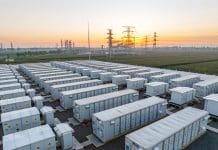Achieving thermal performance, or ‘energy efficiency’, in buildings is heavily reliant on specifying thermal insulation. Neil Kirwin, specification manager at SFS, discusses how early engagement can help improve space heating and efficient thermal performance
Engaging with a building envelope manufacturer early in a project can generate a system specification that produces the most robust thermal performance.
Building envelope system suppliers can assist by providing U-value calculations to establish insulation thickness.
Yet, engaging with a manufacturer early in a project will generate a system specification that optimises that insulation thickness and produces the maximum in terms of robust specification.
The obvious way to achieve lower U-values would seem to require thicker insulation. Yet, not only does the building envelope have to achieve its target U-values, but it must be capable of resisting frequent extreme weather to reliably deliver U-values, and long-term comfort for building users.
Does thicker insulation equate to more robust thermal performance?
U-value targets set at a project’s outset must be realistic.
They should prioritise comfort whilst acknowledging that increasing the thickness of insulation layers is subject to diminishing returns.
Thermal transmission is not linear; greater amounts of insulation are added to achieve smaller gains in U-values.
Increased insulation thickness has knock-on effects for the rest of the building envelope, such as increasing the length of fasteners and the length of cladding brackets.
Costs can quickly begin to spiral in the name of achieving a marginally lower U-value, so obtaining advice about the benefits and drawbacks of more insulation is essential. Thicker building envelope solutions put greater pressure on the building footprint.
If the space isn’t available to accommodate the extra insulation, then the internal floor area has to be reduced to compromise.
Many buildings depend on maximising internal floor space, whether to achieve the highest commercial rental yields or to sell residential apartments at a premium.
National building regulations set out calculation methods to establish appropriate U-values, but the regulatory requirements are not set with future climatic conditions in mind.
If a robust specification is one that helps a building to be fit for the future, is it enough to design and specify only to building regulation levels of performance?
Using early-stage manufacturer engagement to improve resilience
Buildings that achieve better ‘performance’ or ‘resilience’ will be well-placed to command their value further into the future.
‘Stranded assets’ are a genuine concern for building owners and operators. Climate change risks buildings becoming unliveable or unusable, with the cost of retrofitting them being too high to justify.
How does this impact on the calculation of U-values?
Accuracy is key. It’s possible to establish ballpark figures for building thermal envelope specifications, but they often make assumptions about the choice of brackets and fixings that bear no relation to the final specification.
As insulation thickness increases, the point thermal bridging effect of brackets becomes more pronounced, leading to thicker insulation materials, which makes the thermal bridging effect worse.
It’s easy to see how a vicious circle like this can soon derail specifications when they’re only looked at in detail later in the project. Particularly for very low U-values, getting appropriate guidance on bracket types and materials (aluminium or stainless steel?) in the early stages will help to guide setting out decisions.
Those decisions shape the internal floor areas and long-term building comfort that can be achieved, so dealing with them from the outset significantly reduces the possibility of performance gaps.
Accurate, early technical design sets the tone for the project. Whether the end goal is ‘just’ regulatory compliance, or a building resilient for the climate in the year 2100, knowing that the thermal properties performance or energy efficiency of the building envelope has been set accordingly makes it harder to change later on.
Installers often review specifications purely on a ‘cost per item’ basis, and will seek to change individual components, with limited awareness of how they contribute to the complete system.
Understanding that every element of the building specification has been specified with a certain performance in mind makes it much easier to ‘defend’ that specification against cost engineering exercises.
For more about robust, sustainable building envelope specifications, and the benefits of engaging with product manufacturers, in the series of technical papers in ‘SFS Talks’.
For further information, call 0330 0555888 or visit https://uk.sfs.com/.
Neil Kirwin

Specification Manager














